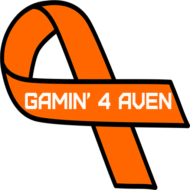It’s time to get back on track with this thing. Football season is almost upon us and this series needs to be finished before then!
Thus far, we’ve covered what a student athlete can get with their scholarships and addressed the revenue argument for why players should be paid. Now it’s time to move on to another common argument to pay the players and that’s using the Olympic Model. Not only is this the next logical stop, but it also deals with another sticky situation in college athletics: endorsements.
For those that are unaware of what the current Olympic Model is, here is a quick run down. Originally, only amateur athletes would participate in the Games, but now pros are allowed to play, and individuals can receive endorsements and pay from their sponsors. One important thing to note here is that the players are not being paid by simply being on the team.
So the Olympics, to a point, are very much like college athletics. You have a large group of athletes on a national team ready to compete, but a select few are actually making money. The only difference here is that the athletes making money at the Olympics are doing so legitimately.
The Olympic Model also covers some sticky endorsement and merchandise situations as well. With this model, any likeness of the athletes can be used and easily compensated for plus if an athlete’s jersey is sold, they can receive royalties. Simple right?
Well, not really.
First off, consider jersey sales alone. Many schools, and ND is one, do not print names on the back of their jerseys (yes, yes, bowl game exception, I know). Now while you can make an argument that a player would only receive money for the time they were at the school, but there are some issues there as well. The #3 is still a huge seller at ND, and it isn’t just because of Michael Floyd, but because of Joe Montana. The #1 as well is quite the generic number that many schools use in their jersey sales as well that has no relation to a player.
So this means players can get rather “lucky” by coming into a program with said famous numbers available. What a nice little recruiting tool that could be used as well for a player looking to maximize their revenue.
Even when you consider third-party sponsors, another sticky situation arises. If a player is making a considerable amount of cash, how do you keep him in the classroom when he is making considerable money? In short, you really can’t save for the threat of said player becoming academically ineligible. While a sponsor could simply just cut ties, but, depending on the money involved, a sponsor would likely want to keep their investment protected and would definitely cut a few academic corners here and there to help out.
If you think it’s hard to control renegade boosters, have fun with an entire corporation.
I’ll be honest, despite the fact that I am punching some holes into the Olympic Model argument, I do see it as having potential. The NCAA could possibly use this as a starting point if they wished to go that route; however, it doesn’t completely cover the situations that exist in the college game. Perhaps with some additional regulations, it could be a possibility (and I will discuss this in a later post), but on its own, it is still lacking.
